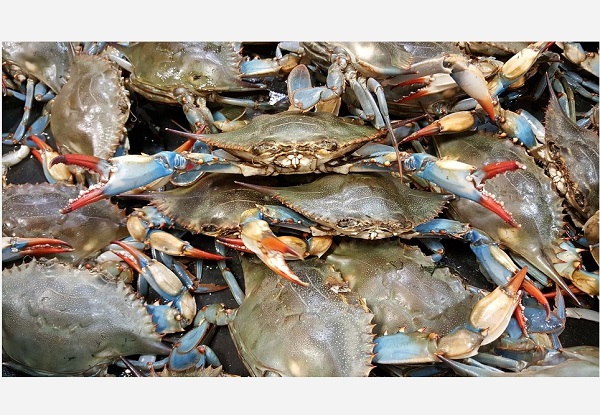BALTIMORE, MD—The Chesapeake Bay Blue Crab Winter Dredge Survey, a cooperative effort between the Maryland Department of Natural Resources and the Virginia Institute of Marine Science (VIMS), estimates 323 million blue crabs in the Chesapeake Bay in 2023, an increase from last year’s low of 227 million crabs.
The number of spawning age female crabs increased from 97 million crabs in 2022 to 152 million crabs in 2023, a substantial increase and well above the management threshold of 72.5 million crabs. Additionally, adult male crabs increased from 28 million crabs in 2022 to 55 million crabs in 2023.
“We are encouraged by the increases in adult crab abundance, but we need to be vigilant given the ongoing low recruitment numbers,” said Maryland Department of Natural Resources Fishing and Boating Services Acting Director Lynn Fegley. “We haven’t seen a strong year class since 2019 despite maintaining the spawning stock at a level capable of producing one.”
Blue crab reproduction is naturally variable and influenced by many factors such as oceanic conditions, available nursery habitat, predation, and other environmental impacts. The number of juvenile crabs in the Chesapeake Bay has been below average for the past four years with the 2023 estimate at 116 million crabs, just a slight increase from 101 million juvenile crabs in 2022.
The consecutive years of low juvenile abundance prompted the Chesapeake Bay Stock Assessment Committee to hold a workshop last fall to explore recruitment drivers and begin planning for a new stock assessment.
The new assessment will allow fishery managers to take an in-depth look at their understanding of the ecology of this species, how it is modeled, and whether the reference points used for management should be revised.
The stock assessment process will kick off later this year with a data workshop coordinated by the NOAA Chesapeake Bay Office and funded by the U.S. Environmental Protection Agency. In the meantime, the Chesapeake Bay Stock Assessment Committee will review the survey results for this year and provide their scientific advice for management. Following their advice, DNR will begin discussions with the Blue Crab Industry Advisory Committee to provide guidance concerning the course of action for 2023 that promotes the health and sustainability of the Chesapeake Bay blue crab population and its fisheries.
The Winter Dredge Survey has been conducted cooperatively by Maryland and Virginia since 1990, and the results are reviewed annually in an effort to have consistent management efforts across the jurisdictions. Throughout the survey, biologists use dredge equipment to capture, measure, record and release blue crabs at 1,500 sites throughout the Chesapeake Bay from December through March. Detailed results are on the DNR website.
Photo via Pixabay


